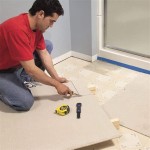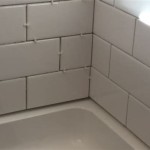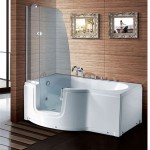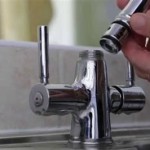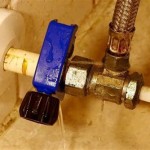Bathroom Sink Pipes Install: Essential Aspects
Bathroom sink pipe installations are critical components of any bathroom, ensuring proper water flow and drainage. Understanding the essential aspects of their installation is crucial for a successful and functional setup. This article provides a comprehensive guide to the essential aspects of bathroom sink pipe installations, considering the verb phrase "install," which implies the process of setting up and connecting the pipes. ### Pipe Selection and Sizing Choosing the appropriate pipes and sizes is paramount. Copper, CPVC, and PEX pipes are commonly used for bathroom sinks. Copper offers durability and longevity, while CPVC and PEX provide flexibility and ease of installation. Pipe sizing should match the water flow requirements of the sink fixtures. ### Drainpipe Installation The drainpipe carries wastewater away from the sink. It should be properly sloped to allow for efficient drainage. Typically, a 1/4-inch slope per foot is recommended. The drainpipe should also be securely connected to the sink drain and the main drain line. ### Water Supply Line Installation Water supply lines provide water to the sink. They should be made of flexible materials like PEX or braided stainless steel hoses. The supply lines should be connected to the appropriate water valves and the sink faucets. Ensure all connections are tight and secure to prevent leaks. ### Trap Assembly The trap assembly is a curved pipe that prevents sewer gases from entering the bathroom. It holds water to create a barrier, and its shape allows water to flow freely while trapping solids. Proper installation of the trap is essential for effective drainage and odor control. ### Faucet Installation Installing the faucet involves connecting it to the water supply lines and securing it to the sink. Ensure the O-rings and gaskets are properly placed to prevent leaks. The faucet handle should operate smoothly and the spout should deliver water at the desired temperature and pressure. ### Testing and Troubleshooting Once the installation is complete, testing is crucial. Run water through the sink to check for leaks. If leaks occur, tighten the connections or replace faulty components. Troubleshooting common problems, such as slow drainage or dripping faucets, can help maintain a functional bathroom sink. ### Conclusion Installing bathroom sink pipes requires careful consideration of pipe selection, drainpipe installation, water supply line installation, trap assembly, faucet installation, and testing. By understanding these essential aspects, you can ensure a successful and trouble-free setup, ensuring a properly functioning bathroom sink for daily use.How To Install Bathroom Sink Drain Queen Bee Of Honey Dos

How To Fit A Bathroom Sink Diy Guides Victorian Plumbing
How To Install Bathroom Sink Drain Queen Bee Of Honey Dos

How To Connect A Bathroom Sink Drain

How To Install A Pipe From Sink Drain Wall Ehow

Bathroom Sink Plumbing Diagram Diy Sinks Drain

Installing A Bathroom Sink Drain Efficient Plumber

Bathroom Sink Plumbing Installation

How To Install The P Trap Under A Sink Dummies

Bathroom Sink Plumbing Installation Diy Montreal
Related Posts


